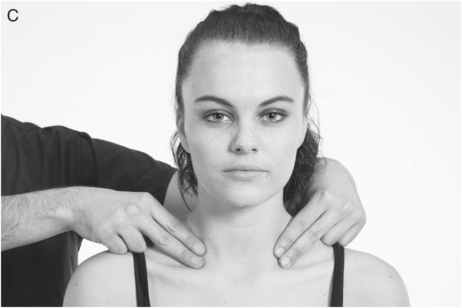

What history points should be elicited for thyroid disease?
Anxiety/mood
Weight change
Appetite
Bowel habit
Temperature preference
Palpitations
Visual disturbance
Radiation exposure
Family history
Drug history – lithium/amiodarone
What is Berry’s sign?
Berry’s sign refers to obliteration of the carotid pulse in patients with malignant thyromegaly.
What is Pemberton’s test/manoeuvre?
Rationale: To identify thoracic inlet obstruction/SVC compression. In the context of thyroid examination, this may be caused by a large retrosternal goitre compressing the thoracic inlet. Other causes include apical lung tumours and masses in the lower neck or upper mediastinum.
Technique: Patient is sitting on a chair. Elevate extended arms vertically above head.
Positive test: The patient develops facial redness/plethora (Pemberton’s sign) and distended neck veins. It may be associated with shortness of breath or pre-syncope.
What are the borders of the anterior triangle of the neck?
The anterior triangle is formed by the midline, the mandible and the anterior border of sternocleoidmastoid muscle.
What are the borders of the posterior triangle of the neck?
The posterior triangle is formed inferiorly by the clavicle, medially by the lateral border of sternocleoidmastoid and laterally by the medial border of the trapezius.
Stay updated, free articles. Join our Telegram channel

Full access? Get Clinical Tree


